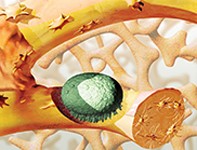Peer Reviewed
Feature Article Endocrinology and metabolism
The fracture cascade: managing individuals who continue to fracture on antiosteoporotic therapies
Abstract
Appropriate antiosteoporotic medication, regular encouragement to ensure compliance with medication and participation in resistance and balance exercises are components of the effective management of individuals with recurrent osteoporotic fractures.
Key Points
- Following a single fracture in an individual with osteoporosis, the risk of further fracture is increased, resulting in the ‘fracture cascade’.
- The effective management of individuals with osteoporosis should include not only the prescribing of an antiosteoporotic agent but also regular encouragement to ensure persistence and adherence with taking their medications.
- Antiosteoporotic agents reduce the risk of subsequent fractures rather than prevent them. Unfortunately, this means that there will be a number of individuals who comply with therapy and continue to fracture.
- Factors influencing recurrent fracturing while on antiosteoporotic therapy include the antiosteoporotic agent being used and compliance with taking it, calcium and vitamin D status, smoking, alcohol consumption, secondary causes of osteoporosis, trauma due to falls and abnormal bone remodelling due to long-term (more than five years) use of antiresorptive osteoporotic agents.
- People who fracture recurrently usually require detailed evaluation and appropriate treatment, and specialist referral is recommended.
- Resistance and balance training exercise programs improve reflexes and muscle strength and reduce the risk of falls.
- The atypical peripheral fractures reported to be associated with long-term bisphosphonate therapy should not detract from prescribing bisphosphonates. However, caution and avoidance of indefinite long-term exposure to these medications must be considered in all patients.
Purchase the PDF version of this article
Already a subscriber? Login here.

